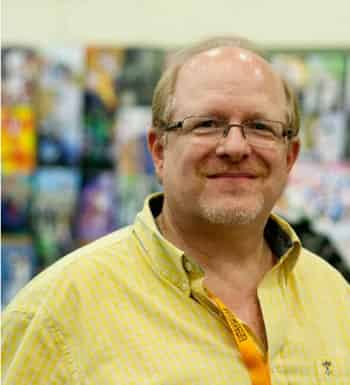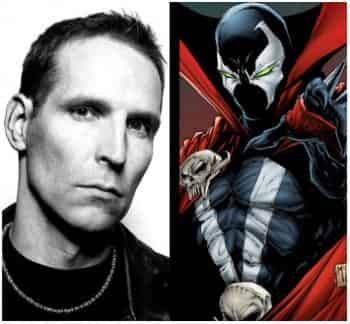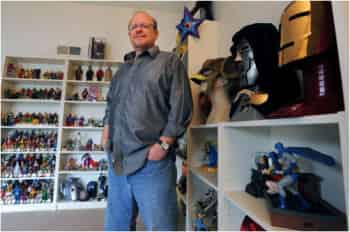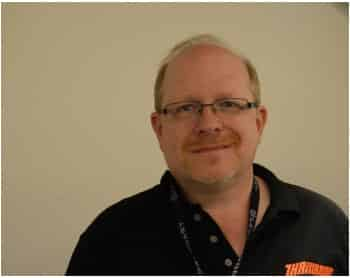
Strategy
The art of self-promotion
In previous posts, we discussed the DIY trend. We argued that it makes it possible to avoid paying middlemen whose value added is debatable. At the same time we admitted the limits of this formula. However, it is possible to excel in all aspects of a comicbook project.
Todd Allen says that the top quality needed in DIY is self-promotion. “It depends a little on what your profile is and how good a person is at promoting themselves” (“C2E2: Digital Comics: The Next Page,” www.comicsbeat.com, April 29, 2014). This isn’t as easy as it sounds. Mark Waid, who is involved in the Thrillbent project, a webcomic publication platform, has this to say:
There are four factors to selling anything: content, distribution, publicity, and marketing. We are great at content; we are good at distribution. Because of the limited amount of time in the day, however, marketing and publicity is where we fall down. That’s no fault of the people at Thrillbent behind the scenes; that’s on me – I don’t have as much time as I’d like to pound the drum and get people to swarm to our site. (“Interview: Mark Waid on the Inner Demons of Daredevil, Attitude Adjustment for the Hulk, and the Thrill of Digital Comics,” www.comicsbeat.com, February 10, 2014).
We’re not looking for excuses, but if promotion is hard for an established artist like Mark Waid, then it’s surely a major issue for us mere mortals.
What’s a digital comic?
To answer this question, we again turn to the words of Mark Waid, who here explains what a digital comic is not:
Waid immediately jumped in, saying they aren’t cheap animation and that “motion comics are the devil’s tools.” His follow-up points demonstrated a thoughtful approach. He thinks that what makes comics is the reader’s ability to determine the pace of the story. The ability for the reader to fill in the voices and what happens in the gutters, using imagination, makes comics an immersive medium. (“C2E2: Digital Comics: The Next Page,” www. comicsbeat.com, April 29, 2014).
At the same time, some analysts say it’s harder to lose money with digital than with paper editions (Janelle Asselin, “The Economics of Digital Comics: Journalist And Educator Todd Allen On His Important New Book,” www.comicsalliance.com, July 15, 2014). We would qualify this statement a little. If you do everything from A to Z, we’ll grant that a digital comic book is cheaper to produce. But what shape will you give your digital version? If you just copy existing architecture, sure, you’ll save money. But competition in the digital world is stiff and works on two levels (in our view): 1) We feel the digital architecture must differentiate itself in various ways to take full advantage of the Internet’s potential. 2) The Internet requires a rate of posting that can capture and maintain the reader’s interest. Both of these demands require an investment.
Taking time to retrace our steps
We were always annoyed about how some comic book authors always felt they had to take a page or two to summarize past events. When we first picked up a comic book, we fell into a story arc whose ramifications went back several issues. We adapted.
However, more recently we read an interview with Mark Waid, who said: “Every once in a while, you’ll get some criticism from a fan who goes, “Yeah, yeah. I know all about Mega Crime. Stop beating a dead horse.” And I’m thinking, “Look, it’s awesome you’ve been keeping up with the book, but have some mercy or compassion for somebody who might be picking it up for the very first time.” (Oliver Sava, “Mark Waid on his Personal Digital-Comics Revolution,” July 10, 2012, http://www.avclub.com)
This was something of a revelation for us and we decided to integrate a summary of the past ramifications of the story we’re currently developing. The question was how to present it. We didn’t just want a straightforward summary. In a discussion with one of our collaborators, we were reminded of the importance of our timeline, and we decided to make use of that. It lets us integrate four dimensions: a short summary, a few key drawings, and the timing of the events.
Self-promotion
Twenty years before Web publication was possible, Todd McFarlane had already identified the main benefits of auto-production: “I don’t got no lawyers. I don’t got no PR people. I don’t got no licensing people. I ain’t got shit! I hate to say it but I just proved that half those jobs at Marvel and DC are worthless. They could get rid of all of those guys and it’s not really going to affect the sales of their comic books, if you’re doing a comic book that taps into the heart of what the kids want right now. You don’t need a battery of people to produce big sales. What you need is a comic book that’s either good, glitzy, or happens to be tapping into whatever’s hot that week” (Gary Groth, “…That’s the Spice of Life, Bud: The Todd McFarlane Interview,” The Comics Journal, #152, August 1992).
Promotion
Here are a few excerpts from an article by Hannah Means-Shannon, reporting on comments made during WonderCon 2013 by people involved in marketing at comic book firms:
- “Trying different approaches and continuing to do so as long as possible is key;”
- “Knowing the pitch well, and the many angles from which it might be interpreted, breaking out of narrow genre definitions, for instance, may win the day;”
- “You have to believe in what you’re selling” and believe that you are “one of the best advocates for it.”
Marketing your characters may stunt their development
Mark Waid has expressed an interesting opinion about seeking profit with Web publications: “Waid commented that the tendency toward merchandizing may encourage the slow-down or freeze of new developments in a character since ‘every character becomes a beach towel’ in the end” (Hannah Means-Shannon, “On the Scene: WonderCon 2013,” comicsbeat.com, March 30, 2013.). This simple comment summarizes the conflict that may arise between financial profitability and artistic integrity.
If it ain’t broke…
We happened upon an interview with Michael G. Wilson, who explains the success of the Bond franchise. One of the points he makes is that the team tried to reinvent the myth before it could become too hackneyed (Edward Cross, “Skyfall Exclusive: An Interview with Producer Michael G. Wilson,” www.comicbookmovie.com, February 13, 2013). Similarly, Harvey Weinstein admits he made some mistakes in promoting the movie The Master, which resulted in it not reaching its audience (Sean O’Connell, “Harvey Weinstein Admits He Mis-Marketed The Master,” www.cinemablend.com, January 29, 2013). These two statements in our opinion demonstrate a kind of humility: admitting our errors allows us to learn something that can be applied to similar situations in the future.
The viability of webcomics
We’re coming back to ideas we’ve already discussed but with new references that provide food for thought. Brian Wood recalls a simple truth about the comic book industry: “This is a job. This is a business, not a hobby or a social activity. That may sound a little cold, and it doesn’t mean I don’t get immense creative satisfaction from doing what I do (if I didn’t, I’d go be a stockbroker or something) but it’s about finding the right balance. Not making business decisions based on being a fan, or social pressure, or making too many allowances for the quirks of this industry” (Graem McMillan, “Wood: Comics is a Business, Not a Hobby or a Social Activity,” Newsarama, January 2, 2013).
Falcone however adds an important nuance that makes a big difference: the idea of teamwork. “Compared to other industries, I find it surprising and overwhelming how pedagogy and mentorship is so deeply ingrained as part of the comic book industry. I’ve seen creator after creator look at someone’s work and give advice and pass on years of wisdom because someone did it for them. Comic creators believe in returning kindness and helping aspiring talent” (Anthony Falcone, “Breaking into the Comics the Marvel Way,” www.comicbookdaily.com, May 30, 2013).
Despite this, the commercial aspect can’t be ignored because creating comics costs money even if you are publishing your work online yourself. This is because comic require a high production rate, which entails certain labour costs (“Mark Waid on the True Cost of Digital,” http://www.comicsbeat.com, January 1, 2013).
These costs mean that even artists like Mark Waid wonder about how to generate revenue (“Holiday Interview #22 – Mark Waid,” www.comicsreporter.com, January 22, 2013). In the same interview Waid sees the industry moving to a more direct and personal relationship between creator and fans. In such an environment how is it possible to generate mass revenues without losing the direct contact?
The Future of Comics in the Web Ara – Part IV
The digital allows creators to exercise more control over their work. They have access to a publishing platform that’s much less expensive than traditional distribution networks.
On the other hand, creators now have to be entrepreneurs (Bruce Lidl, “2012: Year of the Artist-Entrepreneur?” comicsbeat.com, January 6, 2012). With increased control over one’s work comes greater risk, and creators must now play a more active role in promotional activities. And more importantly, in our opinion, they also have to develop a business model that will allow them to make a living from their art.
The Future of Comics in the Web Ara – Part III
Digital publication can be an opportunity to realign the value readers give to comic books and to broaden traditional readership. “Interestingly the survey did indicate that 57% of the digital readers did read print comics, while just 16% of the print readers had purchased or read digital comics. Also of interest are the top reasons that readers preferred one format or the other. Digital readers preferred reading comics digitally because they provided immediate access (which could mean that many of these readers don’t have access to a convenient comic shop), and they also like the convenience and easy storage and portability of digital comics.)” (“DC Retailer Survey Results: Older, Male, Middle-class, Avid,” comicsbeat.com, February 10, 2012). This indicates that the digital and physical markets reach two relatively different groups of readers. But this is no reason to fear the new medium.
Neil Gaiman explains that he first became interested in artwork piracy on the Web when he was looking into the issue of violations of his own copyright. He quickly realized something strange: sales increased in areas where his comics were being pirated. For example, his work is most pirated in Russia but that’s also where they have the highest sales.
Intrigued, he convinced his publisher to experiment by making one of his most popular comics, American Gods, which has consistently good sales, available for free on the Internet for one month. Sales of the series increased 300%. (« Neil Gaiman explique son point de vue sur le piratage », www.comicsblog.ff, August 19, 2012).









